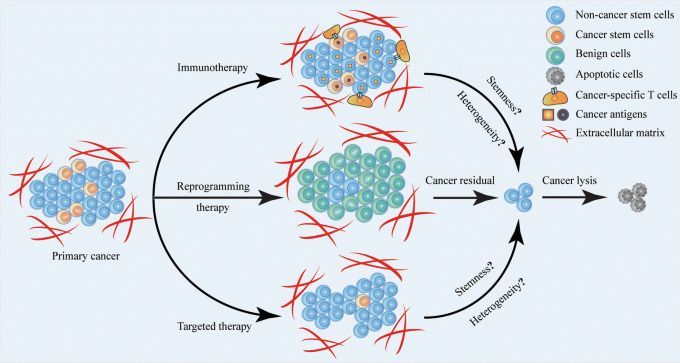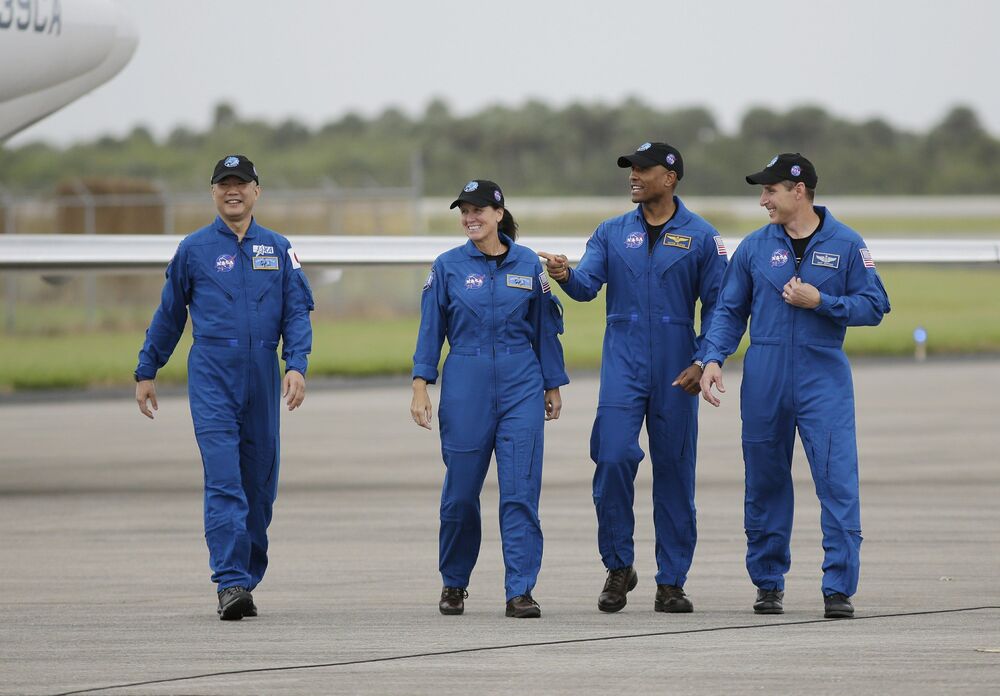Circa 2019
There is hope for the world’s largest carnivorous marsupials whose numbers have been ravaged by disease.


Circa 2019
In the past decade, remarkable progress has been made in reprogramming terminally differentiated somatic cells and cancer cells into induced pluripotent cells and cancer cells with benign phenotypes. Recent studies have explored various approaches to induce reprogramming from one cell type to another, including lineage-specific transcription factors-, combinatorial small molecules-, microRNAs- and embryonic microenvironment-derived exosome-mediated reprogramming. These reprogramming approaches have been proven to be technically feasible and versatile to enable re-activation of sequestered epigenetic regions, thus driving fate decisions of differentiated cells. One of the significant utilities of cancer cell reprogramming is the therapeutic potential of retrieving normal cell functions from various malignancies. However, there are several major obstacles to overcome in cancer cell reprogramming before clinical translation, including characterization of reprogramming mechanisms, improvement of reprogramming efficiency and safety, and development of delivery methods. Recently, several insights in reprogramming mechanism have been proposed, and determining progress has been achieved to promote reprogramming efficiency and feasibility, allowing it to emerge as a promising therapy against cancer in the near future. This review aims to discuss recent applications in cancer cell reprogramming, with a focus on the clinical significance and limitations of different reprogramming approaches, while summarizing vital roles played by transcription factors, small molecules, microRNAs and exosomes during the reprogramming process.


Circa 2006
Quantum cryptography (QC) is still in a very early stage and there are very few commercial products available. But this doesn’t prevent researchers to look at new solutions. For example, physicists from the University of Wien, Austria, are testing qutrits instead of the more common qubits. These qutrits can simultaneously exist in three basic states — instead of two for the qubits. This means that QC systems based on qutrits will inherently be more secure. But if QC using qubits has been demonstrated over distances exceeding 100 kilometers, the experiments with qutrits are today confined within labs. For more information, read this abstract of a highly technical paper or continue below.
Scientists have successfully teleported a three-dimensional quantum state. The international effort between Chinese and Austrian scientists could be crucial for the future of quantum computers.
The researchers, from Austrian Academy of Sciences, the University of Vienna, and University of Science and Technology of China, were able to teleport the quantum state of one photon to another distant state. The three-dimensional transportation is a huge leap forward. Previously, only two-dimensional quantum teleportation of qubits has been possible. By entering a third dimension, the scientists were able to transport a more advanced unit of quantum information known as a “qutrit.”
Quantum computing is different than what’s known as classical computing, which is what powers phones and laptops. These traditional devices store information in bits, which are represented with a binary 0 or 1. A good metaphor is to imagine a circle, where each 0 and 1 are on opposite points. In Quantum computing, which deals with atomic and subatomic particles, qubits can exist at both of those points as well as anywhere else in the circle.
SpaceX’s Starship rocket system could help solve the problem of space junk, according to the company’s president and chief operating officer.
“There’s rocket bodies littering the space environment, and dead satellites,” said Gwynne Shotwell in an online interview with Time Magazine.

Australian researchers have identified two new mammals in the Land Down Under — both cousins of the doe-eyed flying marsupials known as greater gliders, according to a report.
A study published in Nature’s Scientific Reports journal found two new distinct and smaller species of gliders in northern and central Australia, outside of the marsupial’s known habitat in the country’s southern end, the Sydney Morning Herald reported.
“Australia’s biodiversity just got a lot richer,” Andrew Krockenberger, a professor at James Cook University and a co-author of the study, told the outlet. “It’s not every day that new mammals are confirmed, let alone two new mammals.”

CAPE CANAVERAL, Fla. (AP) — Four astronauts arrived at Kennedy Space Center on Sunday for SpaceX’s second crew launch, coming up next weekend.
For NASA, it marks the long-awaited start of regular crew rotations at the International Space Station, with private companies providing the lifts. There will be double the number of astronauts as the test flight earlier this year, and their mission will last a full six months.
“Make no mistake: Every flight is a test flight when it comes to space travel. But it’s also true that we need to routinely be able to go to the International Space Station,” NASA Administrator Jim Bridenstine said in welcoming the astronauts to Kennedy.

#BREAKING: Pfizer says an early peek at its vaccine data suggests the shots may be 90% effective at preventing COVID-19. bit.ly/3leFbzp
Pfizer says an early peek at its vaccine data suggests the shots may be 90% effective at preventing COVID-19, indicating the company is on track later this month to file an emergency use application with U.S. regulators.
Monday’s announcement doesn’t mean a vaccine is imminent: This interim analysis, from an independent data monitoring board, looked at 94 infections recorded so far in a study that has enrolled nearly 44,000 people in the U.S. and five other countries.
Pfizer Inc. did not provide any more details about those cases, and cautioned the initial protection rate might change by the time the study ends. Even revealing such early data is highly unusual.
